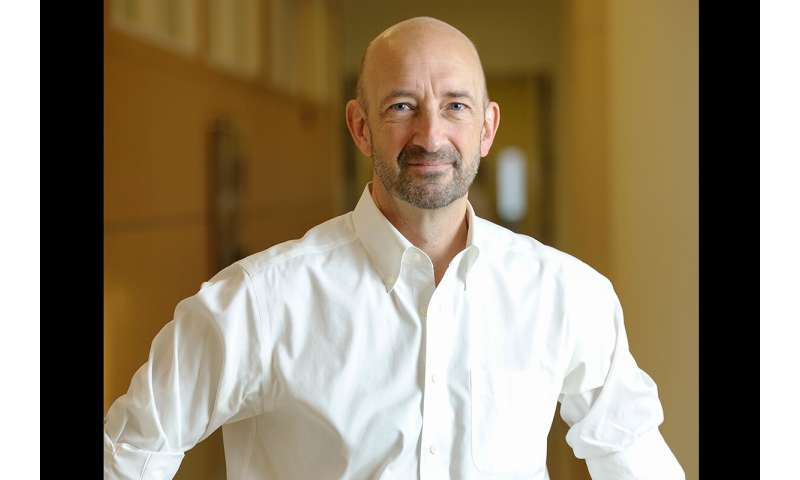
The monetary value of a vaccine that could potentially end the COVID-19 pandemic is between 5%-15% of worldwide wealth, according to a new paper co-written by a University of Illinois Urbana-Champaign business professor.
The value of a vaccine rises substantially when there is uncertainty about the duration of the current pandemic and the likelihood of future outbreaks, said Timothy Johnson, the Karl and Louise Schewe Professor of Finance at the Gies College of Business.
“If you had a magic wand that you could wave and make the coronavirus disappear, how valuable would that wand be? In this case, the magic wand is a vaccine, and our bottom-line number was it would be worth between 5%-15% of total wealth,” he said.
The threat of the disease leads to lower labor supply, further harming output and growth.
“Our model is not immunological in that we’re not detailing the dynamics of susceptible and infected populations,” Johnson said. “We’re just modeling the COVID-19 pandemic as something that comes in and destroys wealth and human capital, and then stops at some random, unknown time in the future.”
While the economic benefits of a viable vaccine are undeniably immense, a surprising finding of the paper concerns the contribution to that value from uncertainty, Johnson said.
“The value of the cure rises sharply when there is uncertainty about the frequency and duration of pandemics,” he said. “Simply not knowing whether the virus is going to end in six weeks, six months or six years creates a tremendous amount of, in economic terms, ‘disutility,” and something that could dispel that uncertainty would be almost as valuable as the cure itself.
“In other words, even if you couldn’t end the current pandemic but you could acquire enough information to know how long it would last, or how long future pandemics would last, you would pay that same order of magnitude of your wealth for that knowledge to resolve that uncertainty.”
Johnson and his co-authors estimated the value of a vaccine—that is, what a “representative agent” would be willing to pay to end the ongoing pandemic—using the joint behavior of stock prices and a novel vaccine progress indicator based on the chronology of stage-by-stage progress of individual vaccine candidates and related news.
The stock market response to news of vaccine progress allowed the researchers to calibrate a model to estimate the economywide financial gain that would be attributable to a cure. To accomplish this, the researchers first needed to summarize the entire corpus of existing vaccine research, spanning several hundred projects worldwide that are racing to develop different versions of a vaccine.
“The state of vaccine research around the world on any given day is very complicated to fully describe if you’re dealing with 200 or so different projects, in terms of their scientific progress and what we know about them,” Johnson said. “So our first task was to try to summarize all of that and shrink it down to one number.
“One of the contributions of the paper is that we introduce a forecasting methodology for a very high-dimensional research endeavor that boils everything down to the one number that we think is most important, which is the expected time to the arrival and deployment of a vaccine. It’s really a statistical approach to the economics of a pandemic, but we think it’s a novel contribution nonetheless.”
From a policy perspective, the implication of the findings are that, while working to end the current pandemic is enormously valuable, equally and perhaps even more valuable is anything that resolves uncertainty about the frequency and, especially, the duration of current and future pandemics, Johnson said.
Source: Read Full Article
